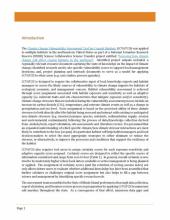
Climate change will significantly affect coastal habitats as sea levels, storms, erosion, and water quality change. However, the impacts on different habitats in different locations will vary, and it is not clear how coastal managers should best protect vulnerable habitats such as marshes, seagrass beds, and dunes. A more complete understanding of risks could help coastal managers prioritize actions that could enhance the resilience of coastal habitats. A new tool, the Climate Change Vulnerability Assessment Tool for Coastal Habitats (CCVATCH), has been developed to help land managers, decision makers, and researchers develop conservation, management, and restoration plans for coastal habitats. This assessment tool identifies primary sources of vulnerability to assist with prioritizing coastal habitat management actions. As part of a 2015 Science Transfer project, four reserves in New England conducted assessments of their areas, demonstrating the utility of the tool to support adaptive management in response to climate change.
Following a thorough data collection, expert elicitation, and literature review process in preparation for applying CCVATCH to numerous salt marshes throughout the region, the project team identified a number of data gaps and research needs related to salt marsh vulnerability. This document identifies these research needs which, if addressed, could lead to a better understanding of the broader vulnerability of salt marshes to climate change across the northeastern United States.